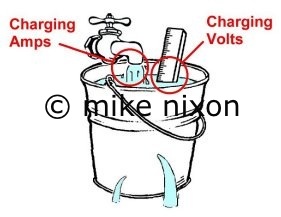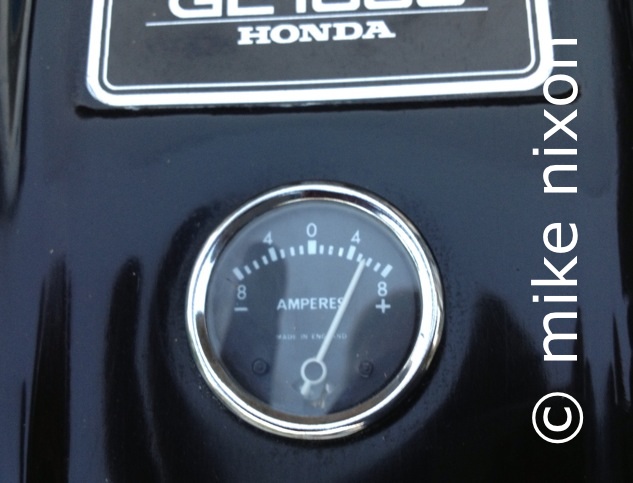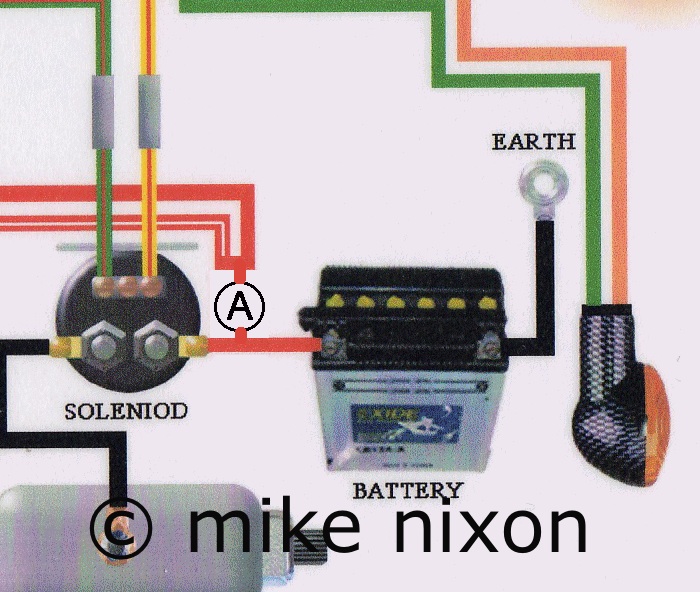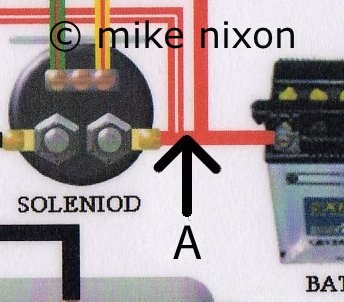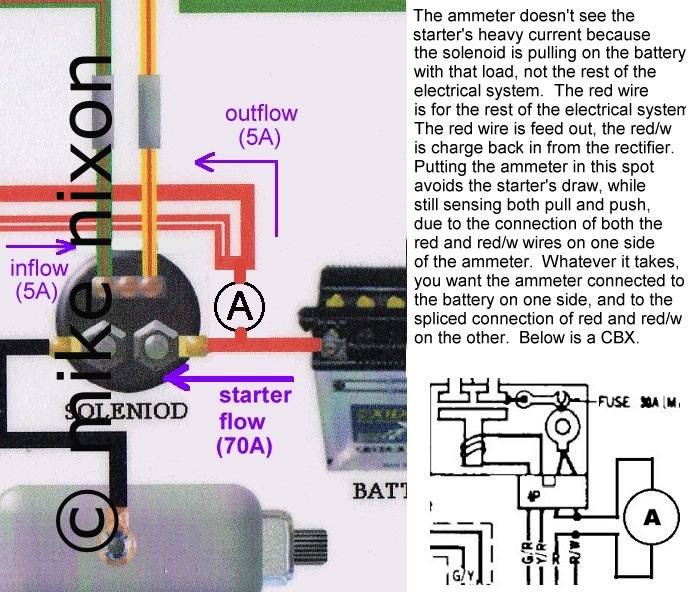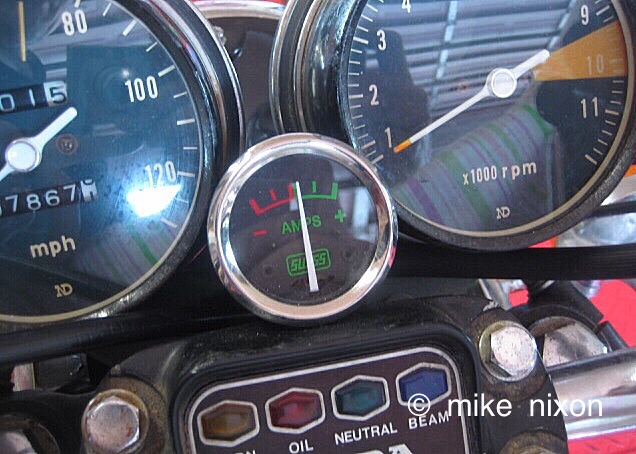  ® ®
|
Ammeter Ethic: Why it is so useful |
|
The ammeter works a lot different from a voltmeter. While a voltmeter indicates the net gain or loss of the electrical system, the ammeter tracks electrical losses and their immediate compensation, in real time. This is exactly the same as the difference between the level of water in the bucket versus the rate of flow into the bucket. It will probably help to think of the battery not as an electricity-producing device but rather as a storage tank for electricity. Add an incoming pipe and an outflow pipe, and the picture is complete. At all times the battery Is both receiving and giving up, simultaneously. That is, it is both being charged and discharging, at the same time, all the time (as long as the vehicle is in use).
As the bike is ridden, the back-and-forth swing of the needle will gradually decrease, until after some time the swing from low amps to high amps will be small, in fact minimal, indicating that the load pulling on the battery is equal to the push going into the battery due to the bike through riding having refreshened the battery's charge. At its least active point the ammeter's needle will hover almost but not quite motionless around a point on the meter slightly above 0, say between 0 and 1. I.e., half an amp. However, at a stop light the needle will again dip below 0, and accelerating from the light, the needle will swing an equal amount above 0, and as the vehicle moves this swing will repeat, gradually lessening, i.e. narrowing, until again it is minimal, quivering around the slightly above 0 point again. So, widest with little positive charge on the battery, narrower as the battery is recharged. But always swinging back and forth, even if just perceptibly, and always centered slightly above 0. This is a scenario that many find unintuitive, even difficult to understand, and it is probably why ammeters fell out of favor some years ago. The way to think of it is when in science class in school the teacher moved a magnet near a piece of wire tied to a -- guess what, an ammeter! Each time the teacher moved the magnet left, the ammeter's needle moved one way, and each time the teacher moved the magnet right the ammeter needle moved in the oppostie direction. This same thing happens on your bike. Once you have spent some time observing it, you will intuitively find the ammeter faithfully represents the interplay between battery and alternator, offering a moment-by-moment picture of the health of the charging system. You will probably be surprised that the battery loses so much charge upon starting the vehicle, and equally amazed that the bike replenishes that lost energy so quickly as it is ridden. Each load, as it is introduced and then removed, will display on the meter. The turnsignals, for example, will cause the ammeter needle to wiggle in time with the flashes. The brake light will show as a slight dip of the ammeter's needle. And as already mentioned, the starter's maximum downward dip will be compensated for with an equally strong upward swing. The lower the ammeter needle's dip downward, the higher its resulting swing upward again. Consequently, very small dips are followed by very small upward compensations. It is normal for the ammeter to occasionally peg. Occasionally doesn't hurt the meter, it is magnetically operated anyway, not physically like a pressure gauge. Typically, it will peg right after the engine is first started, and once in a while at a stop if you happen to rev the engine from idle, especially if the brake is on. This is as expected. One last thing. Don't choose an automotive ammeter for your bike. In the first place, a large scale automotive instrument will allow the needle to barely move on a motorcycle, and since movement is what an ammeter is all about, it will be useless. Moreover, while it may seem intuitive to use a 30A (or 15A) ammeter because your bike has a 30+ amp (or 15A) electrical system, that is not so. The 30A rating of a CBX or CB900, or the 15A rating on an sohc four, is for the whole system. An ammeter, correctly installed, reads only a small portion of that; merely that which passes between battery and charging system, between one-tenth and one-quarter of the system's overall capacity. So an 8-10A meter is ideal for vintage Hondas. |
|
Recommended reading: Introduction to the ammeter |
|
Last updated April 2022 Email me © 1996-2022 Mike Nixon |
